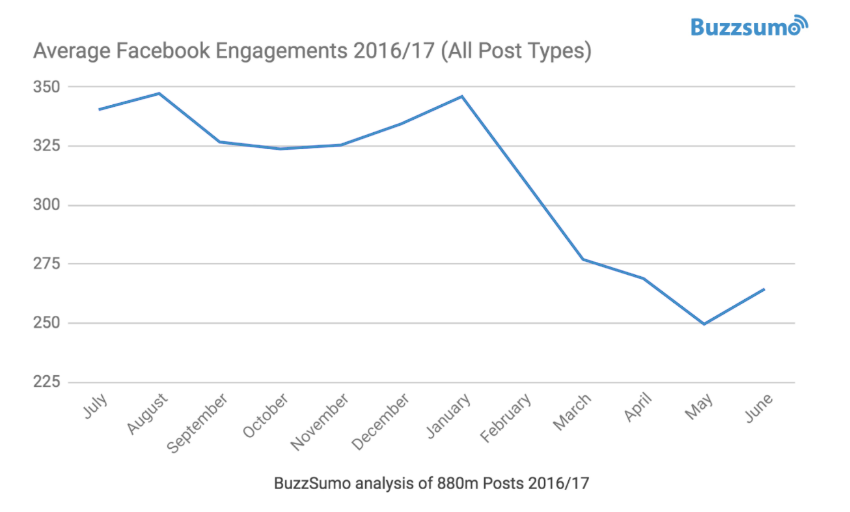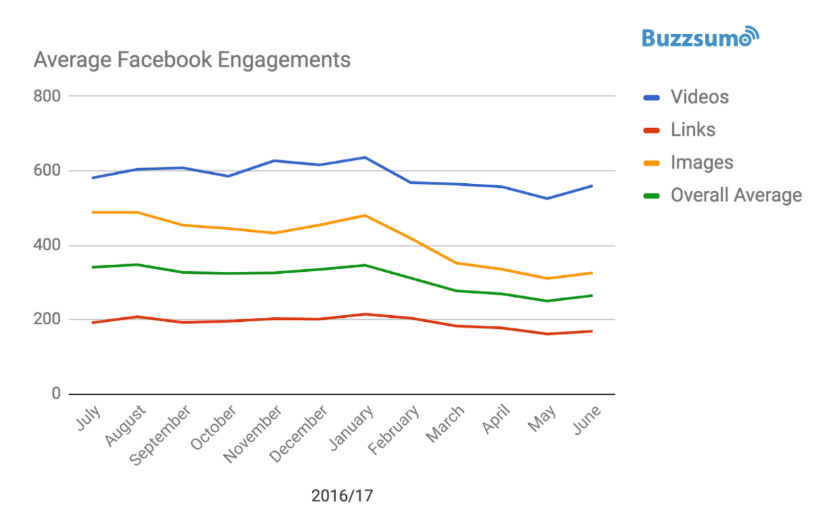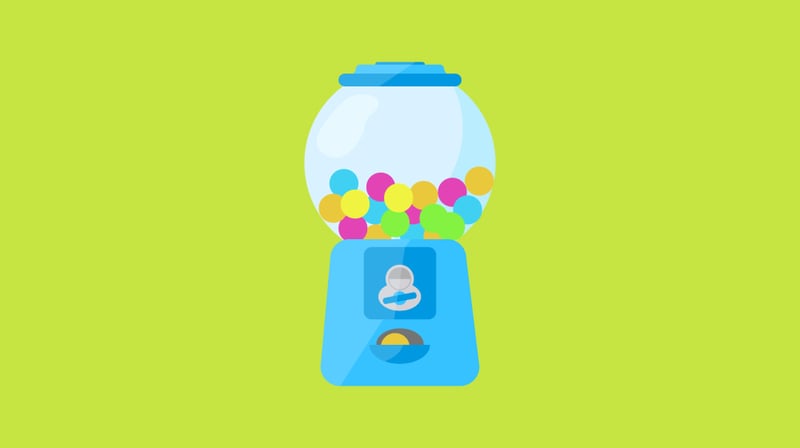In recent months, Facebook has yet again changed the way content is delivered to its users.
This is big news for student affairs because it will directly impact the reach of your events, photos, and other types of posts. With this in mind, it’s time to consider whether Facebook really is the best tool to reach and engage your students.
We all live and breathe social media, with the majority of us checking it several times a day. But how many of us can confidently say we understand the black box that’s pulling the strings behind the curtain?
Spoiler alert: nobody does.
The black box, most commonly referred to as an algorithm, determines which content we see and which we don’t. It is a well-guarded secret by platforms in order to protect it from being abused.
Nevertheless, as the algorithm changes, business and organizations have been forced to adapt.
You might have noticed that your event invitations aren’t performing well, students aren’t “liking” your posts as much as they used to, or people are complaining they don’t even see your content.
Well, it might not be due to student apathy or over-programming. You might just be suffering from algorithm changes.
A tipping point for student affairs on social media
In recent months, platforms have been focusing their efforts on prioritizing things that matter to us as individuals. This usually means content from family and friends (especially the ones we actually like).
This is great news for users because our social feeds have become personally curated to our interests. No more scrolling through endless photos of people’s children before you reach the good stuff (for me, that’s usually cats).

This is bad news for businesses and student affairs professionals who are left fighting for the little bit of space remains on users’ timelines and feeds.
So what is an algorithm?
By definition, an algorithm is “a process or set of rules to be followed in calculations or other problem-solving operations, especially by a computer.”
In the social media world, it’s the process that decides which videos appear as “recommended” after you finish watching a video on YouTube, the order in which photos appear on a timeline, and the deciding factor of if and where a post will appear in someone’s feed.
How the algorithm affects Facebook
If you look closely enough, you might have noticed that posts that appear on your Facebook feed are not displayed in the order in which they were posted. This is because each post is assigned an individual score based on what Facebook thinks users will like most, then order posts using those points.
If the algorithm has determined you aren’t interested in a particular person’s posts, they’ll start appearing further and further down your timeline (and eventually disappear).
But how does this affect businesses, you ask? Well, let’s take a closer look at each Facebook feature.
Facebook Features
Events
Facebook events are a dedicated space for event details, invitations, and RSVPs. Once people commit to attending an event, it will appear in their Facebook calendar and will occasionally suggest the event to their friends with similar interests.
While the functionality of Facebook events is great, you still have to work with the algorithm to drive traffic to the page. You run the risk of people not seeing the opportunity and missing out. What’s more, you’re not just competing against events happening on campus; you’re mixed in with a sea of other events happening in the local area. This option might be viable for a big end-of-year celebration, but wouldn’t be sustainable for typical year-round programming.
Pages
Facebook pages are like a landing page for your business or organization. People can visit your page and see all the content you’re producing in a dedicated feed. Posts by others will appear in a separate area which prevents your posts from being bumped off.
Unfortunately, Facebook actively suppresses content coming from pages in an effort to keep people’s timelines focused on family and friends. If you want to extend your reach, you’re going to need to start paying to boost your posts. This is the difference between “organic” (not-paid) and “paid” reach. This is the least effective option for reaching students organically.
It’s for this reason why many big publishers like Buzzfeed, Tasty, and TheDoDo, who got their breaks on Facebook, have had to diversify their platforms to other forms of social media or invest heavily in Facebook ads.
Groups
Facebook groups have become a big priority for the company in recent months. The focus of a group is to connect people based on a shared topic or interest. Groups can be open to the public or restricted on an approval basis.
Stacked against all other Facebook options, a group has the best chance of surviving in the current content war, however, they can easily become unwieldy if you have more than a handful to manage. Consider how much time you can feasibly dedicate to monitoring all of the posts that are submitted to a group.
On a similar note, if you’re a member of a few groups you’ll know how frustrating it can be to receive constant notifications. People often end up muting notifications on groups because people are posting in them too often or because the posts don’t align with their interests. From a programming point of view, once a student has decided to mute your group, you’ve pretty much lost them from that channel of communication.
Facebook Trends
Other than changes to the Facebook algorithm, there also general trends in social media that organizations have to constantly be aware of and react to.
Demographics
While Facebook is still the most popular social media platform in the United States, it is quickly losing favor among younger generations. Teens are now reporting that Snapchat is their preferred social media, with Facebook only being the most preferred to 9% of teens.
If you’re going to start future-proofing your engagement strategies, this reason alone might be enough to consider shifting to other avenues.
Sharing content is down
In general, there is a downward trend in sharing. It seems that people have become more passive when consuming public content, and when they do share content, it’s often via email or direct message (otherwise known as “dark” social) rather than by tagging someone in the comments or sharing it directly to their timeline. This is bad news for organic traffic on Facebook, because posts that receive low numbers of interactions and shares are simply not going to appear on people’s newsfeeds.

I can’t justify quitting Facebook, so what should I do?
Ok. We know that you’re not necessarily going to close all your Facebook groups and pages after reading this. So if you’re going to keep using Facebook to engage students, at least maximize your reach by using the following tips:
(Live) Video
When it comes to posting, the format of your posts makes a real difference. At this time, live video is still on top in terms of post format. If you can find opportunities to go live (promoting an event during the first five minutes, for example), do it! You’ll increase engagement and appear more frequently and consistently on people’s feeds.
If you can’t go live, regular video is your next best bet. After that, photo posts. Posting with only text is probably not worth the time it will take to write it.

Notifications
It’s possible on all the major platforms (except Snapchat) to be notified when a specific account posts. Try to encourage your students to select the “see first” option on your Facebook page, “all notifications” on your Facebook group, and the notification bell on Twitter, Instagram, and YouTube.
Encourage engagement
Posts that get a lot of engagement from people are more likely to perform better on timelines, so get in the habit of encouraging interactions. You’ll notice that if someone likes or comments on an old photo it can resurface and spark up a whole new set of interactions from others. This means likes, shares, reactions, or comments will help spotlight your content and prevent it from decaying.
For example, you could follow a post by asking “what do you think?” or “what are you most excited about?” Be careful not to fall into the algorithm trap by using these statements: “like this post if…” or “comment below if…”
These can be interpreted as click-bait and will be suppressed.

Budget
We know that this might be a moot point for many student affairs departments, but if you have something big to shout about, consider boosting a post to reach more people. You can target people based on school attended, the area in which they live, and demographics like age. It doesn’t even have to break the bank — running an ad can cost as little as $1 a day and you can scale up from there.
Assess Facebook engagement
As with any engagement tool, make sure you are taking advantage of any analytics that are available to you. Facebook pages and groups offer reports on who and how often people are engaging with your content.
Consider using customizable URLs for each platform so that you can see how many people are engaging with content you publish.
Setting targets for how well you want certain posts to perform and testing with different formats will help you maximize your social strategy and give you that data you might need if you decide to invest in another engagement tool.
If not Facebook, what else?
It may be considered old-fashioned by today’s standards, but emails are still one of the few ways to guarantee information is being delivered to your audience. But don’t get complacent — you still need to make sure you maximize the effectiveness before hitting send. Today’s 18-24-year-old has mastered the art of swiping left on emails they don’t find interesting. Spend extra time crafting a compelling subject line, utilizing personalization tools so students feel more attended to, incorporating funny GIFs, and tracking your open and click rates.
Software
Another fool-proof way to reach your students is by using a campus engagement platform (like Presence!). Engagement platforms allow you to market your events to students all in one centralized place, and with Presence, students can see what’s happening around campus without being logged in.
This is important because you should always be striving to break down as many barriers to engagement as possible. By removing yourself as a gatekeeper to information, students have a better chance of seeing all available events and therefore, getting involved.
Plus, student engagement software offers some pretty sweet analytics, which can help you plan and market your programming much more effectively. For example, you can see not only who is attending certain types of events, but also which groups aren’t.
Community engagement
Relying on technology alone is an easy way for your events to get lost in the world wide web. Once you’ve set up your event online, consider reaching out to students who have a large reach (read: friendship circle) who you can use to create a buzz around campus. Bonus points if you can appeal to their interests; find an event that you know they would enjoy and they can become free ambassadors for you.
Triangulation
No two students are the same, so don’t expect one marketing method to work for everyone. Using a combination of two or more marketing techniques will help you engage more than one demographic of student. This is where analytics are really useful, as they help you identify pockets of people you might be missing and enable you to change your focus to meet them where they are.
Save your time
Time is precious, so spend a moment to rank your marketing strategies by most reach, most effective, and groups-targeted. Don’t spend an hour scheduling posts on Twitter if you know you can spend 30 minutes reaching more students on Snapchat.
How do you reach your students on social? Send us a tweet (but maybe not a Facebook message) @themoderncampus.




